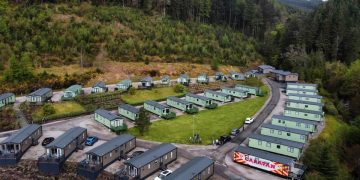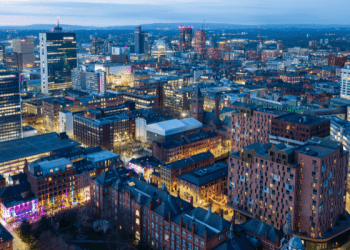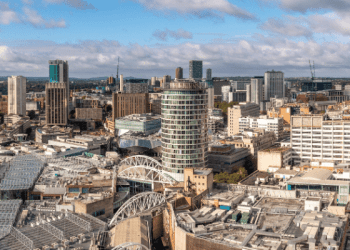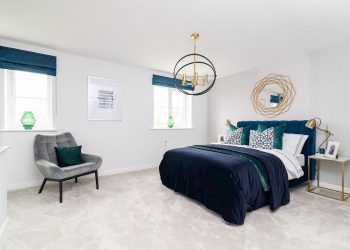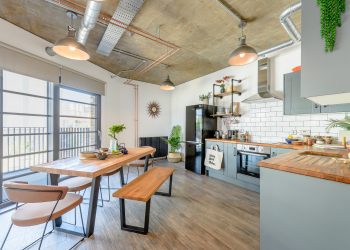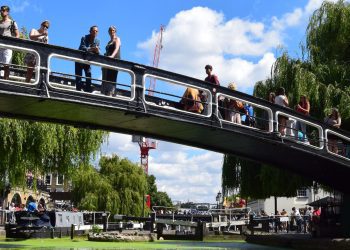Birmingham has been the scene of some of the most intensive regeneration efforts in the UK in recent years. Since the City Centre Masterplan was launched in September 2010, dilapidated parts of the industrial core of the city have already been transformed. In response to this and other factors, house prices in and around this Midlands hub have shown healthy growth. A recent report by JLL also forecasted that Birmingham property prices would bounce back quicker than in any other city in the coming years.
So, which areas of Birmingham should be on the radar of property investors? We take a look at the centre’s key regeneration hotspots, as well as some in more peripheral areas, to discover some of Birmingham’s most promising residential investment options.
Birmingham’s quarters
Birmingham has a number of different ‘quarters’ that describe different areas of the city. However, slightly confusingly, the Council’s Masterplan splits the central areas in seven ‘quarters’ that largely do not correspond to the more traditional areas.
The Jewellery Quarter, Chinese Quarter, Gay Village, Irish Quarter and Creative Quarter are well-known to locals. However, the Council divided the centre of Birmingham into its own larger Quarters that cluster around the central ‘City Core’.
These Quarters consist of Digbeth, Southside & Highgate, the Jewellery Quarter, St. George & St. Chad, Eastside, and Westside & Ladywood. We take a look at some of the smaller districts within these Quarters to discover some key development hotspots for property investment in Birmingham.
Westside
Westside is a fashionable central neighbourhood that benefits from the Birmingham Canal Old Line running through it. Historic warehouses have been converted into luxury flats and new developments tend to blend into their surroundings with a similar aesthetic. Its varied bars and restaurants join performance spaces like the Crescent Theatre and Arena Birmingham to create a buzzy and contemporary cultural zone.
The Council’s plans include extending the Central Core area out into bordering areas. Westside plans include the redevelopment of Arena Central, Baskerville Wharf and Paradise Circus. The new Library of Birmingham provides a strong community hub, along with Centenary Square and the Town Hall.

New Street Station
New Street Station was reopened in 2015 after major modernisation. The UK’s busiest station outside London, the New Street complex also now includes the Grand Central shopping centre and John Lewis department store.
Train stations are becoming key drivers of inner city regeneration and destinations in themselves. With a capacity of 55 million passengers per year New Street has plenty of room for growth, and has successfully revived this central district.
Of course, with HS2 set to open between London and Birmingham in 2029, this will hopefully inject further interest (and investment capital) into the area.
Snow Hill District
The area around Snow Hill station is an area of major potential growth. The station itself is on the brink of a major overhaul that looks set to attract more traffic and investment into the district.
In early 2023, Ballymore completed the Three Snowhill office building – the largest single office development in the city. The company also enabled the extension of the Metro line and improved access for pedestrians to the historic Jewellery and Gun Quarters.
Eastside
The focus of plans to expand the core of the city eastwards, Eastside has undergone major regeneration over the past two decades. This modernisation continues, with Birmingham developer Court Collaboration recently winning planning permission for the tallest building in the city.
The residential complex of two buildings – one 51 and one 15 storeys – will provide 667 new homes alongside retail and leisure spaces. Located on the corner of Jennens Road and James Watt Queensway, the 525 ft scheme will include a gym, sky lounge and cinema.
Southern Gateway
A £1 billion redevelopment area, Southern Gateway aims to expand the city’s core southwards into the Southside and Highgate quarter. Southside brings a vibrant entertainment and culinary culture, as well as a focal point for the city’s Chinese and LGBT communities.
Alongside Southside, the exciting new £1.5 billion Smithfield area regeneration is underway. The first Smithfield Market phase of this is due to complete in 2025. Development Partner Lendlease chose David Kohn Architects to design the mixed-use market space, which is set to include 2,000 new homes.
Read more
Perry Bar
This suburb to the north of central Birmingham is the location for substantial redevelopment. The goal is to build around 5,000 new homes in total, with £500 million of investment being poured into the area.
Perry Bar station is set for a major overhaul, while infrastructure changes will improve the area’s accessibility for walking, cycling and public transport. The area played a key part in the 2022 Commonwealth Games when they were held in the city.
Port Loop
Built within a loop of the Birmingham Canal Old Line, Port Loop is a new island community only 15 minutes’ walk from the city centre. Residents will also enjoy easy access to the Jewellery Quarter and Westside district, as well as a new swimming pool and leisure centre on their doorstep.
New tow paths will help to connect Port Loop with surrounding areas and provide walkers and cyclists with new routes to explore. Edgbaston Reservoir provides a tranquil spot just to the north of the new development, while the shops, bars and restaurants of Brindleyplace are only 15 minutes away.

Soho Loop
Another canalside development, Soho Wharf secured planning permission in January 2020 for 750 new homes in the derelict Soho Loop section of the Mainline Canal. Join venture partners Galliard Homes and Apsley House Capital will create 650 apartments and 102 townhouses, alongside new garden and commercial spaces.
The scheme forms part of the Greater Icknield Masterplan. This aims to transform brownfield sites to the west of the city centre, attracting fresh talent and investment into Birmingham.
Digbeth
This industrial heartland on the edge of Birmingham city centre is the focus of a great deal of investment, including Birmingham Smithfield. This ambitious regeneration project is set to transform large parts of the area into mixed-use office and commercial space, residential units and public space. Digbeth is also set to be the site of a major new television studios, in what’s hoped will be the first of many investments into this area.
Property investment: Birmingham’s highest-rated new homes to buy
The developments below are the best new residential developments in Birmingham, according to resident ratings on HomeViews. Explore the list for popular options, or head over to our Area Guide to Birmingham for a more detailed view of the city’s residential schemes.
If you’re interested in finding out more about this rapidly developing city, read our area guide below. From there, you can find out more about the most popular areas to live in the city, as well as reviews of Birmingham’s best new build homes.

HomeViews is the only independent review platform for residential developments in the UK. Prospective buyers and tenants use it to make an informed decision on where to live based on insights from carefully verified resident reviews. Part of Rightmove since February 2024, we’re working with developers, house builders, operators, housing associations and the Government to give residents a voice, recognise high performers and to help improve standards across the industry.



















